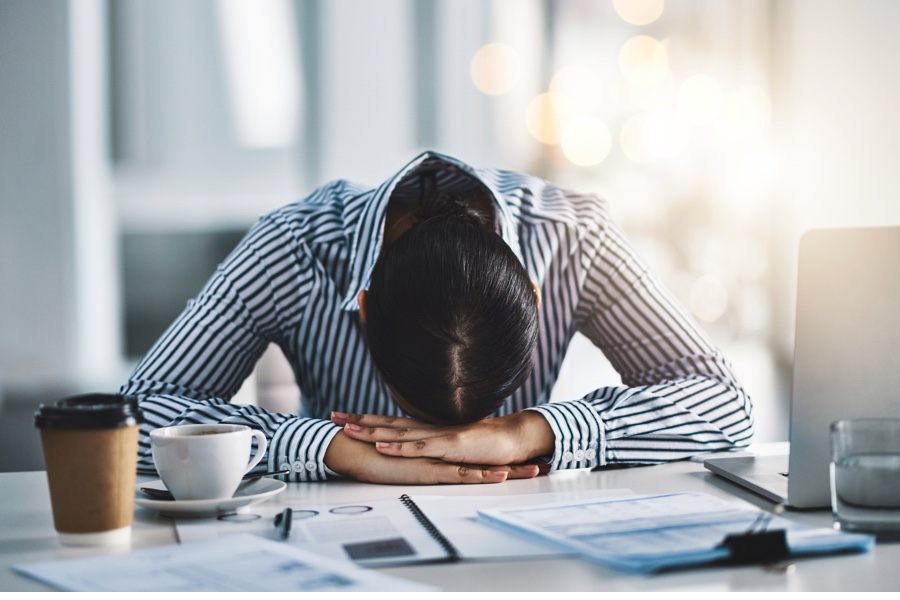Why Burnout Is Hitting Women the Hardest
Here’s why the phenomenon is on the rise across industries and why women bear the brunt of it.

Why burnout is hitting women the hardest. Photo:
PeopleImages | Getty Images
It’s the end of a long workday. You just got home, and right when you collapse onto the couch to unwind, you look around and see dirty dishes in the sink and the mess of kids toys on the floor. You know you should do something about it, but the thought of lifting another finger sends you into a spiral.
If that sounds like you, you might be experiencing “burnout,” and you’re not the only one.
In fact, burnout is becoming so common that the World Health Organization (WHO) recently classified it as an “occupational phenomenon” and added it to their International Classification of Diseases.
Add to that a 2018 Gallup poll of 7,500 employees, which found that two-thirds of U.S. employees experience some degree of burnout on the job.
This phenomenon is spreading quickly, and it’s hitting women harder than anyone else.
Normalizing Burnout
The World Health Organization recently defined the term “burnout” as “a syndrome conceptualized as resulting from chronic workplace stress that has not been successfully managed.”
But beyond the unmanaged stress, there is the insidious problem of overwork, increasing employer expectations, and the rise of “hustle culture” that is making us all feel inferior.
All of these factors make it that much harder to deal with the everyday sprints of modern day life. Not only that, but burnout contributes to huge health risks in our society, and it costs the U.S. approximately $315 billion per year, according to the Harvard Business Review.
Burnout hurts families, employees, and companies, and it will only continue to get worse unless we take a hard look at why this is becoming an issue for so many of us.
We’re Always “On”
To understand the root causes, we must look at one of the biggest issues with our modern work culture: the constant breakdown of barriers between work and one’s personal life. Work used to end when we walked out the door to go home — we literally couldn’t take it with us. But now, the eight-hour workday seems to be a thing of the past.
When the International Labor Organization established the eight-hour limit to the workday, it was in response to the historical mistreatment of laborers — particularly child laborers — who were often asked to complete ten, 12, or even 16-hour days.
This movement created more safety and humanity around work environments in a time when most people were working in factories during the Industrial Revolution.
Fast-forward about a hundred years and that 8-hour workday is dissolving, and the result is that more of us feel the need to be always working, always responsive, always on-call.
That narrow eight-hour window of availability has stretched into all hours of the day and night, thanks to the technology that keeps us tethered to our inboxes no matter where we go.
Women Get the Brunt of It
Work-life “imbalance” is enough to cause anyone stress, but I argue the phenomenon of burnout is affecting women disproportionately for three reasons.
First, women are still fighting for equal treatment at work. Yes, we’ve come a long way in workplace equality, but there are still large disparities in opportunity and pay – factors that make it all the more difficult for a woman to say no to projects, for fear of being overlooked or undermined.
Feeling invisible presents another contributing factor to women’s burnout. Research has demonstrated that women get less credit for workplace ideas and contributions than men. And if that doesn’t make a person want to spit nails, what does? With many more women than men in low-authority roles, no wonder there’s cynicism and frustration — as a woman, your words and actions simply don’t matter.
Lastly, women are still saddled with much of the physical and emotional labor of running households. Make no mistake that this household effort, while often invisible and frustratingly hard to measure, is emotionally and physically taxing.
All of this contributes to burnout, and I believe scratches the surface of why women experience burnout faster than men.
So, what can we do to stem the tide of a force this torrential? Actively push back.
Recognizing the Signs
While burnout is on the rise, the symptoms of the phenomenon are often hard to define in a concrete way. The Mayo Clinic says to look out for things like increased cynicism at work, disillusionment, overuse of substances, and changes in sleep habits.
These are all good things to watch out for, but I think it leaves out some key symptoms that contribute to the problem, like: women’s tendency to focus on the needs of others, workplace cultures failing to include and engage women, and a lack of urgency to practice self-care or turn our work minds off.
All of these things contribute to the snowball effect of burnout.
As Emilie Aries, author of the insightful new book Bossed Up, said in a recent blog post, “When you’re burnt out, you often no longer see yourself as an agent of change in your own life. It feels like all your efforts and your choices no longer impact your outcomes.”
I think that’s exactly the heart of the problem: We need to be able to see ourselves as capable of creating necessary changes in our lives.
So yes, it may be more likely for women — who are juggling hectic work lives, aging parents, partners, and possibly children — to feel the brunt of burnout. But, it’s also an important reminder to be the agents of change in our lives.
That means standing up to bosses who are asking for too much. It means saying “no” when necessary and not feeling bad about it. It means men stepping up and changing the definition alongside us of what “hard work” looks like. It means holding ourselves — and our fellow women — accountable to our own needs first.
No, it will not be an overnight fix. But as Aries, speaking from experience, said later in her post, “There […] are steps you can take as an individual to regain your power over your day-to-day life, to grow your sense of agency — and to heal from burnout.”
Not to put another thing on your to-do list, but women: It’s time to make work “work” for us.


